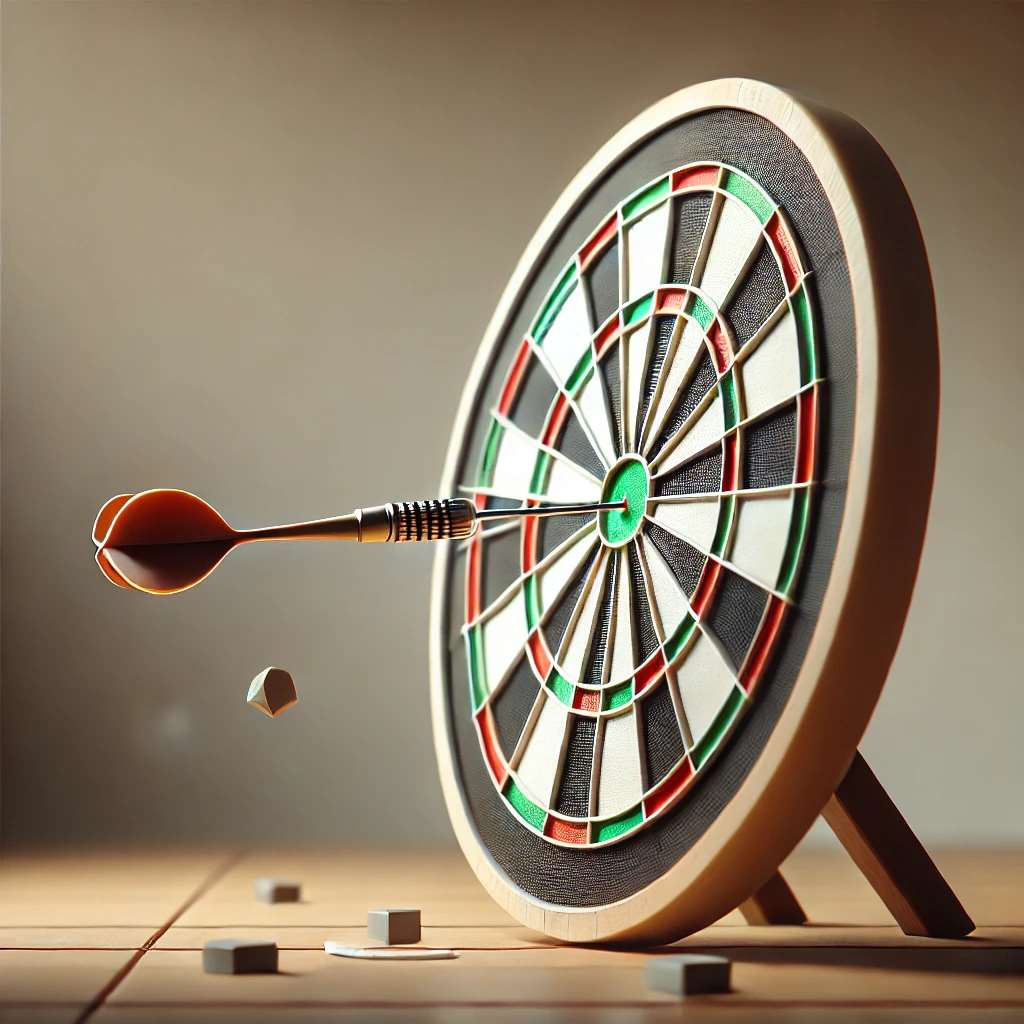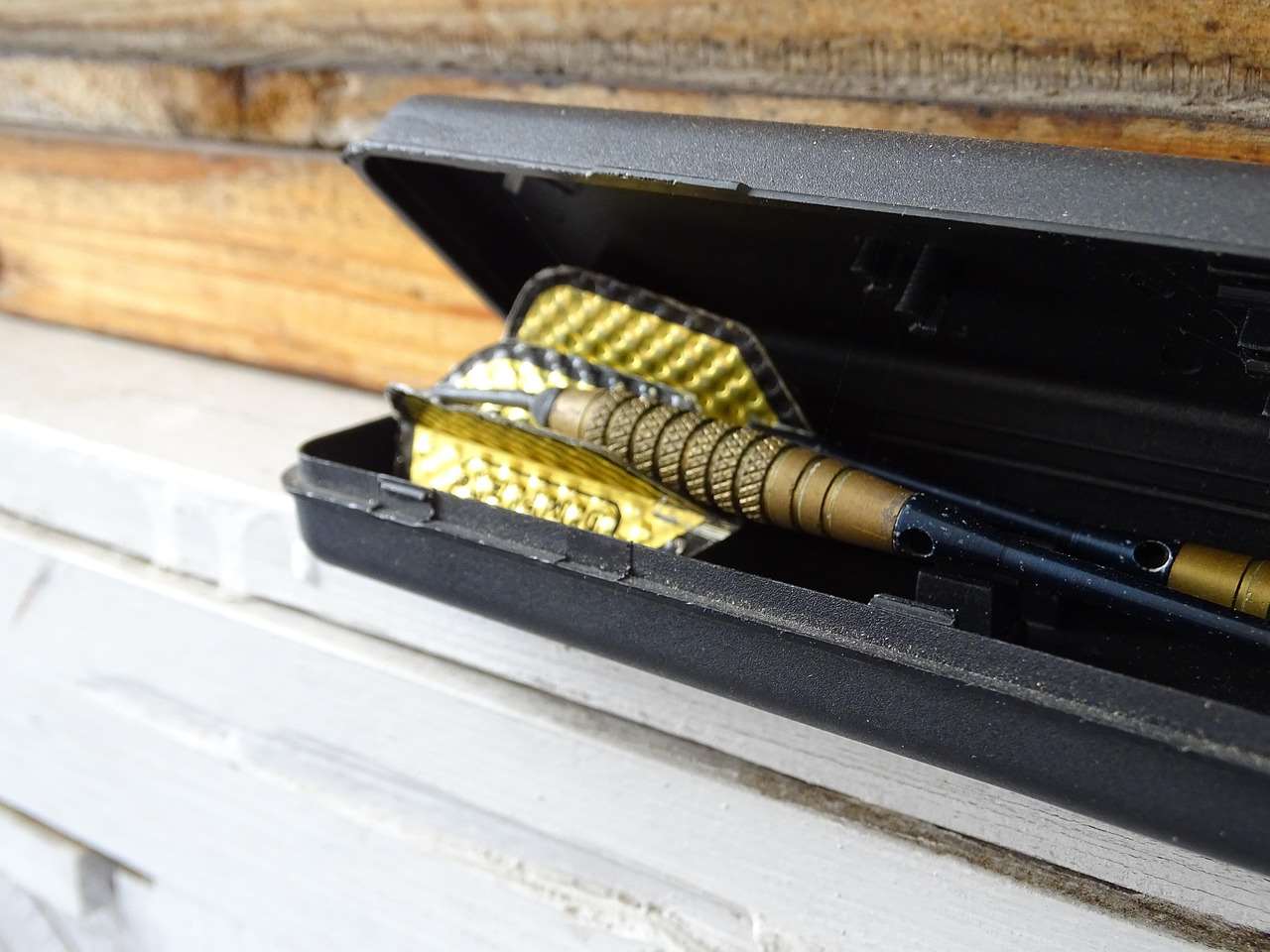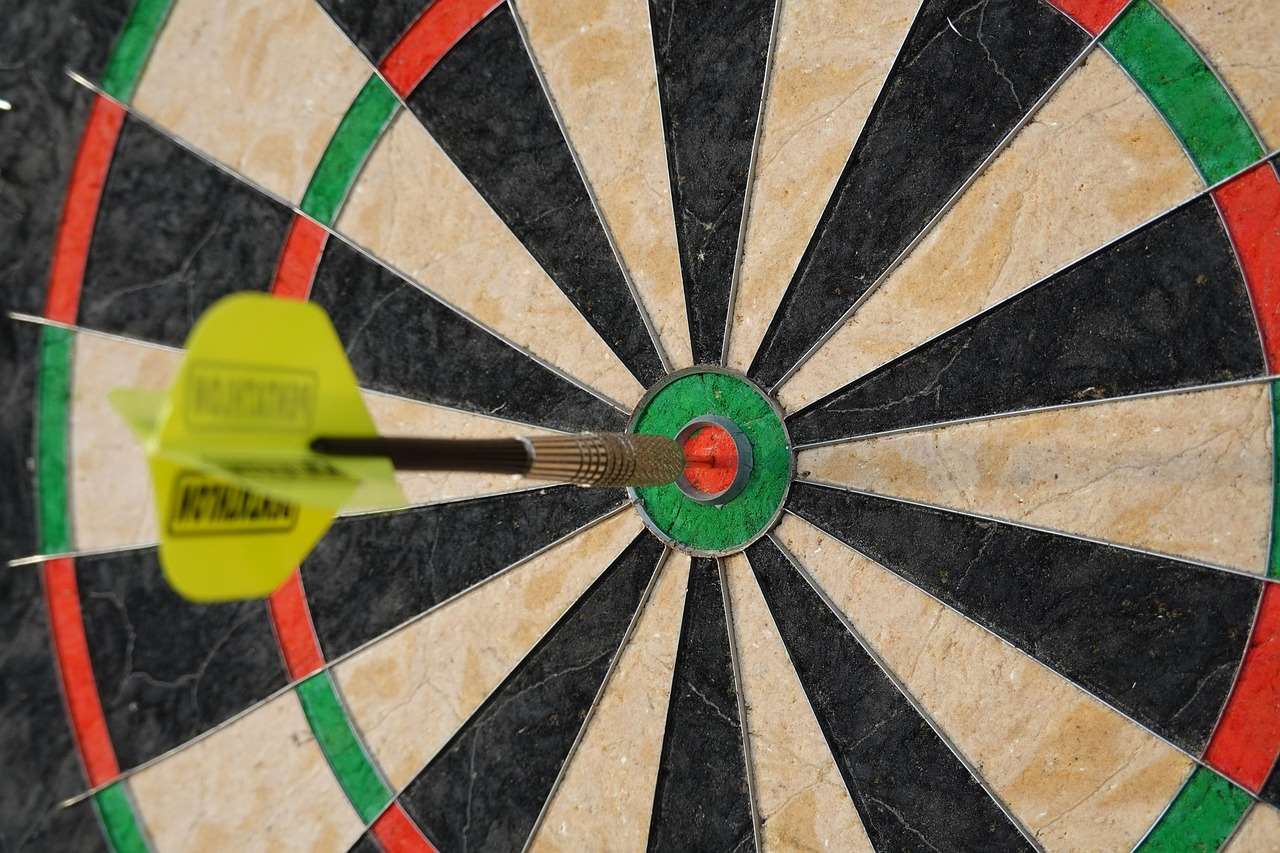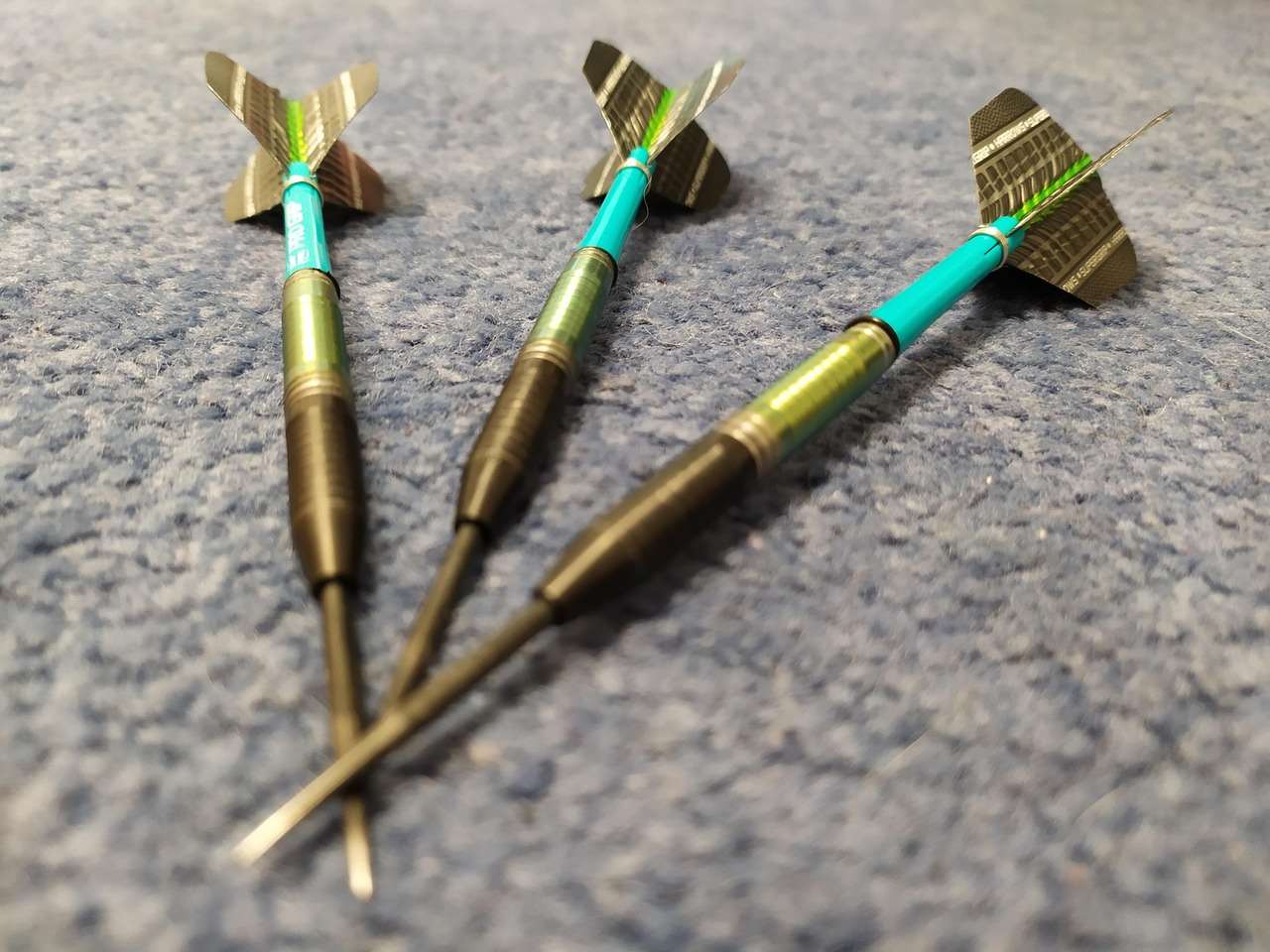Changing Dart Flights is a simple process that can drastically improve your dart game by ensuring consistent aerodynamics and preventing wobble. This guide will walk you through the various methods, tools, and considerations involved in replacing your worn or damaged flights, helping you achieve optimal dart performance.
⚠️ Still Using Pen & Paper (or a Chalkboard)?! ⚠️
Step into the future! The Dart Counter App handles all the scoring, suggests checkouts, and tracks your stats automatically. It's easier than you think!
Try the Smart Dart Counter App FREE!Ready for an upgrade? Click above!
Why You Need to Know About Changing Dart Flights
Every dart player, from casual to professional, will eventually need to replace their dart flights. They’re a consumable part of the game, just like chalk for pool cues or strings for a tennis racket. Over time, flights become damaged from constant impact with the board, other darts, or even just general wear and tear. Understanding when and how to change them is crucial for maintaining consistent dart trajectories and preventing frustrating wobbles. Furthermore, experimenting with different flight shapes and materials can significantly impact your game, allowing you to fine-tune your dart setup for optimal performance. The right flight can correct minor flaws in your throwing technique and improve your overall accuracy.

Ignoring worn-out flights can lead to erratic dart behavior, causing scores to plummet and frustration to rise. You might notice your darts fishtailing, landing at odd angles, or simply not grouping as tightly as they used to. Don’t underestimate the importance of these seemingly small pieces of equipment; they play a significant role in your dart’s flight characteristics. Learning how to properly assess your flights and replace them when necessary is a fundamental skill for any serious dart player.
Recognizing When It’s Time for Changing Dart Flights
Knowing when to replace your flights isn’t always obvious. Here are some key signs that indicate it’s time for changing dart flights:
- Visible Tears or Damage: This is the most obvious sign. Any rips, tears, or significant creases in the flight’s surface will disrupt its airflow.
- Bent or Warped Shape: If your flights are no longer perfectly symmetrical or maintain their shape, they need replacing. This can happen from repeated collisions with the board.
- Frayed Edges: Frayed edges can catch on the air and cause inconsistent dart flight.
- Loose Fit: If your flights are no longer securely attached to the dart shaft, they’ll wobble and affect accuracy.
- Inconsistent Dart Flight: Even without visible damage, if you notice your darts are behaving erratically, try changing the flights first. This is a common symptom of subtle flight damage.
Regularly inspecting your flights before each game is a good habit to develop. A quick visual check can save you from a frustrating match filled with unpredictable dart trajectories. Consider Choose Best Dart Equipment if you’re noticing excessive wear and tear.
Tools and Materials Needed for Changing Dart Flights
Fortunately, changing dart flights doesn’t require a lot of specialized equipment. Here’s what you’ll typically need:
- New Dart Flights: Obviously! Have a variety of shapes and materials on hand to experiment with.
- Dart Flight Protector (Optional): These small metal or plastic caps fit over the end of the flight to prevent damage.
- Flight Punch (Optional): Creates a small hole in the flight for attaching flight protectors.
- Dart Tool or Multi-Tool: Some multi-tools have built-in flight replacement tools.
- Shaft Rings (If applicable): Some shafts use small rings to secure the flight.
Having a well-stocked dart kit ensures you’re always prepared to make necessary repairs and adjustments. Consider purchasing a variety of flight shapes and materials to experiment with and discover what works best for your throwing style.
Step-by-Step Guide to Changing Dart Flights
Here’s a detailed guide to changing dart flights:
- Remove the Old Flight: Gently pull the old flight straight out of the shaft. If it’s stuck, use a dart tool or needle-nose pliers to carefully remove it.
- Prepare the New Flight (If Using Protectors): If you’re using flight protectors, use a flight punch to create a small hole in the flight where the protector will attach.
- Insert the New Flight: Carefully slide the new flight into the shaft, ensuring it’s fully seated. Some shafts have a split design that requires you to spread the fins slightly to insert the flight.
- Attach Flight Protectors (If Used): Slide the flight protector onto the flight, aligning it with the hole you punched earlier.
- Secure with Shaft Rings (If Applicable): If your shaft uses shaft rings, slide them onto the shaft to secure the flight in place.
- Test and Adjust: Throw a few darts to test the new flights. If you notice any wobbling or instability, double-check that the flight is properly seated and secured.
Practice makes perfect! The more you change your flights, the easier and faster the process will become. Don’t be afraid to experiment with different techniques and tools to find what works best for you.
Different Types of Dart Flights and Their Impact
The world of dart flights is surprisingly diverse. Different shapes, sizes, and materials can significantly impact your dart’s flight characteristics. Here’s a brief overview:
Flight Shapes
- Standard: The most common shape, offering a good balance of stability and lift.
- Slim: Smaller surface area, resulting in less drag and faster dart speed.
- Kite: Similar to standard, but with a slightly wider shape for increased stability.
- Pear: Offers more lift than standard flights, ideal for players who throw with a high arc.
- Vane: Smallest surface area, designed for maximum speed and minimal drag.
Flight Materials
- Polyester: The most affordable and durable option.
- Nylon: Slightly more durable than polyester and offers a smoother flight.
- Mylar: A reflective material that can help with visibility.
- Plastic: Very durable and often used for molded flights.

Experimenting with different flight shapes and materials is crucial for finding the perfect setup for your throwing style. A larger flight will provide more stability, while a smaller flight will allow for greater speed. The material will affect the flight’s durability and how it interacts with the air. Consider reading about Budget vs Premium Darts Compared to see how it relates to flight selection.
Tips for Extending the Life of Your Dart Flights
While changing dart flights is inevitable, you can take steps to prolong their lifespan:
- Use Flight Protectors: As mentioned earlier, these protect the ends of your flights from damage.
- Rotate Your Darts: Rotating your darts during a game can help distribute wear and tear more evenly.
- Avoid Overcrowding the Board: Leaving space between your darts can prevent collisions and flight damage.
- Use a Dartboard Surround: This protects your walls and also helps prevent darts from bouncing out and damaging the flights.
- Store Your Darts Properly: When not in use, store your darts in a case to protect them from dust and damage.
Taking care of your darts and flights is an investment in your game. By following these tips, you can reduce the frequency of flight replacements and save money in the long run. Pay attention to What Makes Darts Premium Quality for durability considerations.
Troubleshooting Common Issues When Changing Dart Flights
Even with the best instructions, you might encounter some issues when changing dart flights. Here are some common problems and how to solve them:
- Flight is Difficult to Remove: Use a dart tool or needle-nose pliers to gently pull the flight out. Be careful not to damage the shaft.
- New Flight Won’t Stay in: Ensure the shaft is clean and the flight is fully seated. You may need to replace the shaft if it’s worn out.
- Flights Keep Falling Out: Use shaft rings to secure the flights. If the rings are loose, replace them.
- Dart Flight Still Wobbles: Double-check that the flight is properly seated and secured. Try a different flight shape or material.

Don’t get discouraged if you encounter problems. With a little patience and troubleshooting, you can overcome any challenges and keep your darts flying straight. If you’re still having trouble, consider seeking advice from experienced dart players or online forums.
Experimenting with Different Flight Setups
One of the most exciting aspects of changing dart flights is the opportunity to experiment with different setups. Don’t be afraid to try different flight shapes, sizes, and materials to see how they affect your game. Keep a record of your results and track which setups work best for you. This is a continuous process of refinement and optimization.
Consider these factors when experimenting:
- Your Throwing Style: Do you throw with a high arc or a flat trajectory?
- Your Dart Weight: Heavier darts may require larger flights for stability.
- Your Grip: A consistent grip can help minimize inconsistencies in dart flight.

By systematically experimenting with different flight setups, you can fine-tune your dart equipment to perfectly match your individual throwing style and maximize your scoring potential. Think about Are Premium Darts Worth It, and how premium flights can factor into your setup.
Professional Advice on Maintaining Dart Flights
Professional dart players understand the importance of well-maintained equipment. Here’s some advice from the pros on keeping your flights in top condition:
- Regularly Inspect Your Flights: Don’t wait for obvious damage; check your flights before each game.
- Carry Spare Flights: Always have a backup set of flights on hand in case of damage.
- Clean Your Flights: Use a soft cloth to remove any dirt or debris from your flights.
- Replace Flights Frequently: Even if your flights don’t appear damaged, replace them regularly to maintain consistent performance.
By following these simple tips, you can ensure that your flights are always in optimal condition and that your darts are flying their best.

Conclusion: Mastering the Art of Changing Dart Flights
Changing Dart Flights is a simple yet crucial aspect of dart playing. By understanding the importance of flight maintenance, recognizing the signs of damage, and mastering the replacement process, you can ensure consistent dart trajectories, improve your accuracy, and elevate your overall game. Don’t underestimate the impact of these small pieces of equipment; they play a vital role in your success on the dartboard. Remember to experiment with different flight shapes and materials to find the perfect setup for your throwing style. Now that you have this knowledge, it’s time to put it into practice. Grab your darts, inspect your flights, and get ready to experience the difference that well-maintained equipment can make! Consider browsing our dart selection and upgrade your gear today!
Hi, I’m Dieter, and I created Dartcounter (Dartcounterapp.com). My motivation wasn’t being a darts expert – quite the opposite! When I first started playing, I loved the game but found keeping accurate scores and tracking stats difficult and distracting.
I figured I couldn’t be the only one struggling with this. So, I decided to build a solution: an easy-to-use application that everyone, no matter their experience level, could use to manage scoring effortlessly.
My goal for Dartcounter was simple: let the app handle the numbers – the scoring, the averages, the stats, even checkout suggestions – so players could focus purely on their throw and enjoying the game. It began as a way to solve my own beginner’s problem, and I’m thrilled it has grown into a helpful tool for the wider darts community.